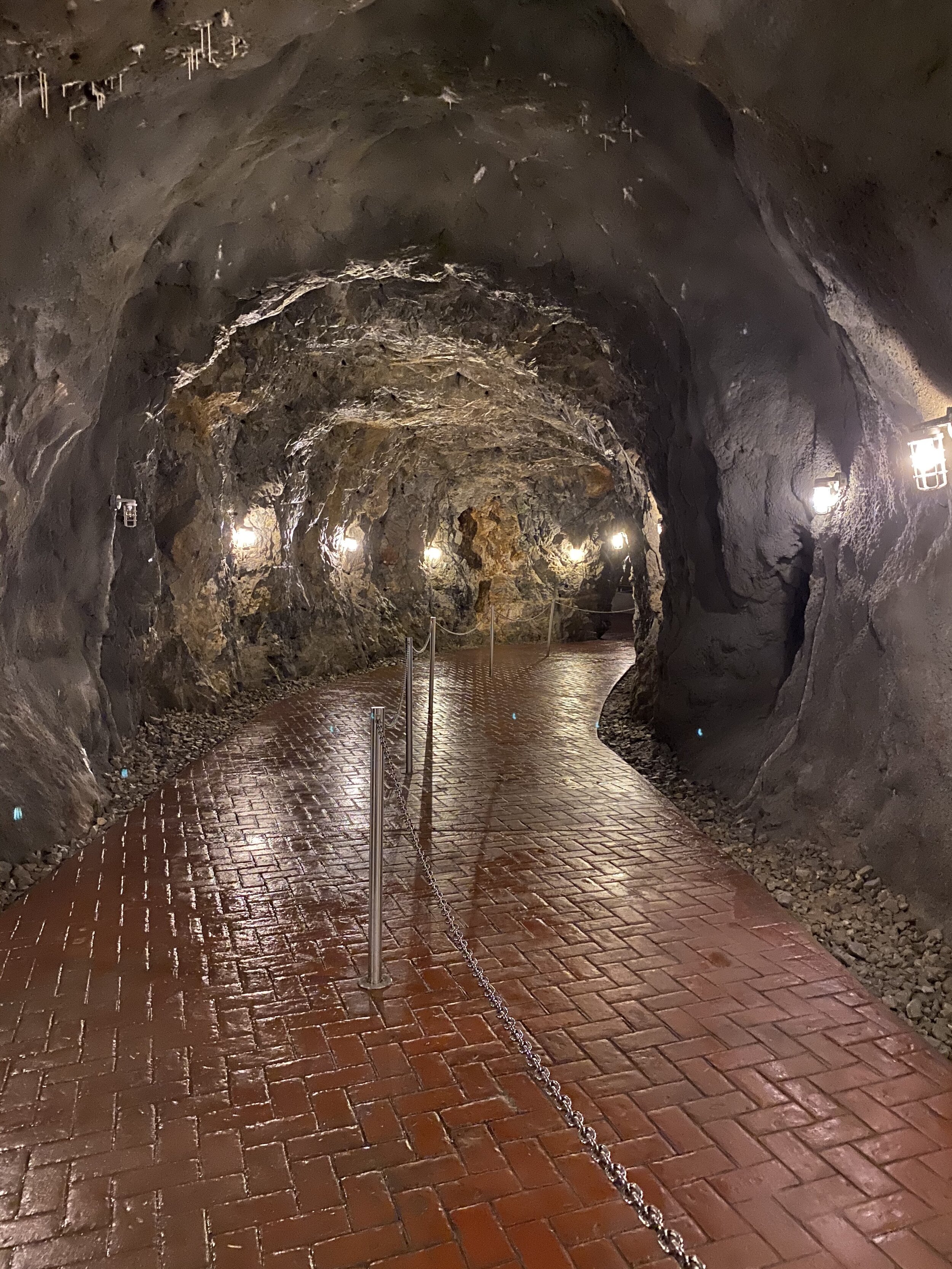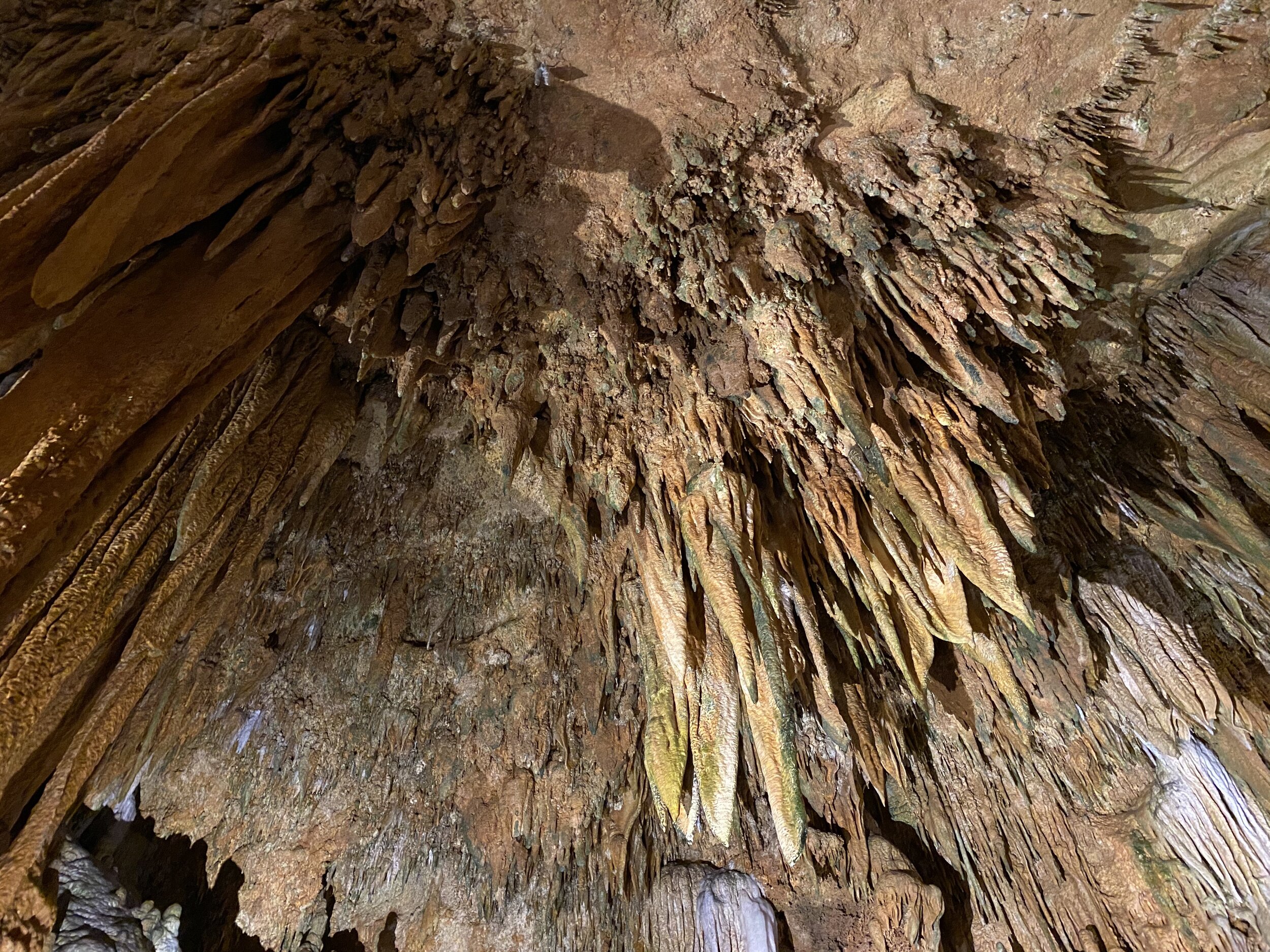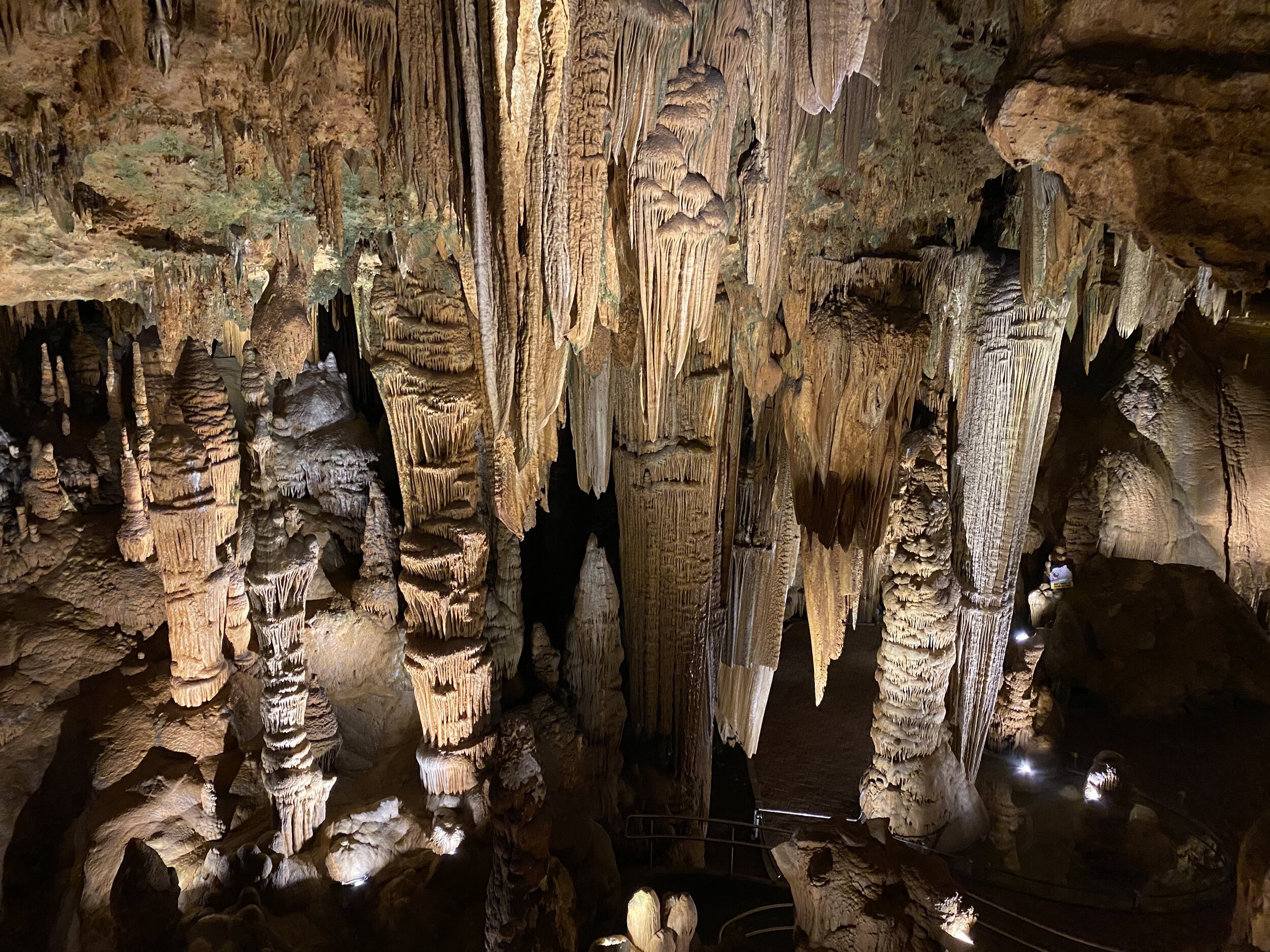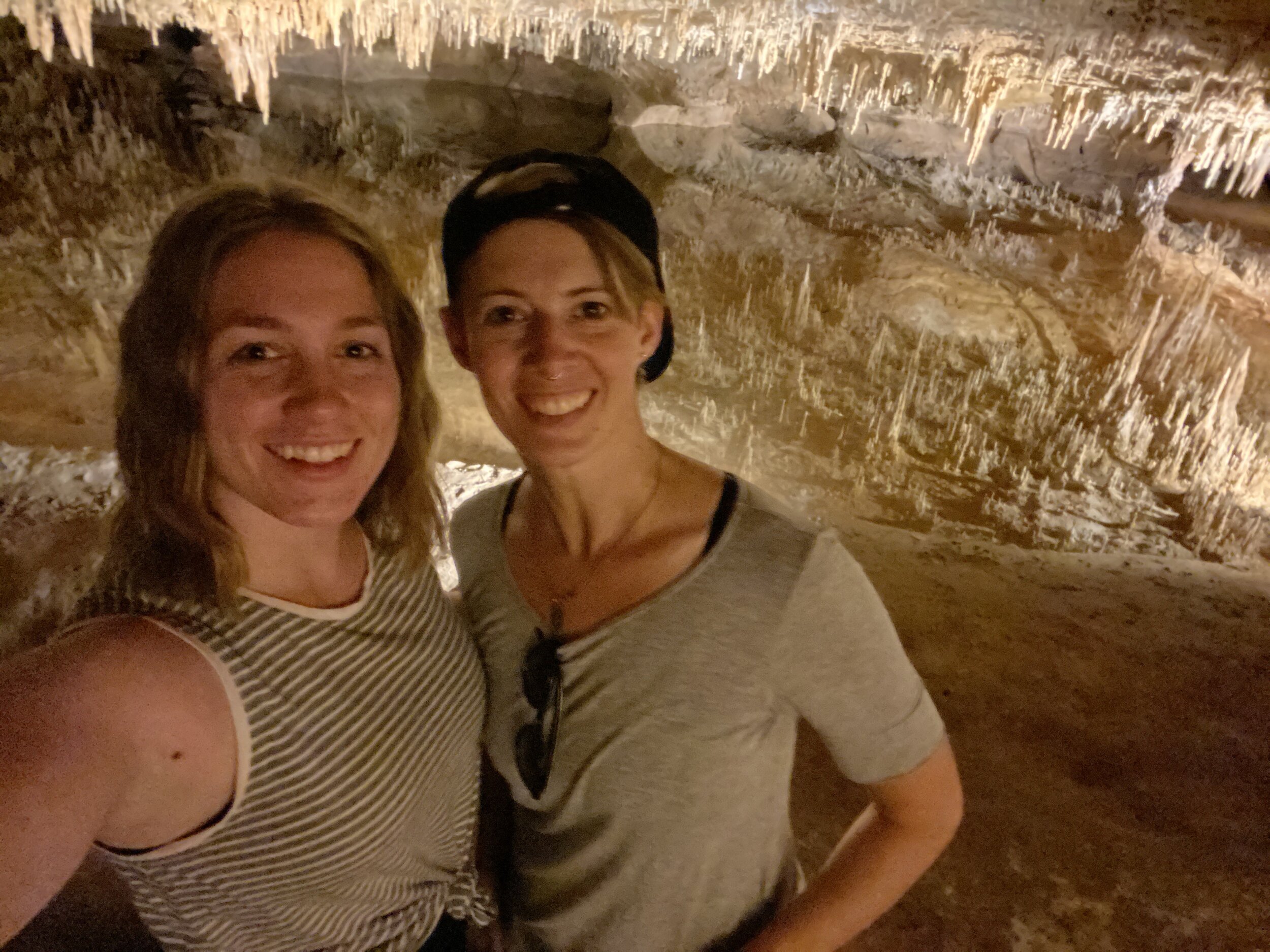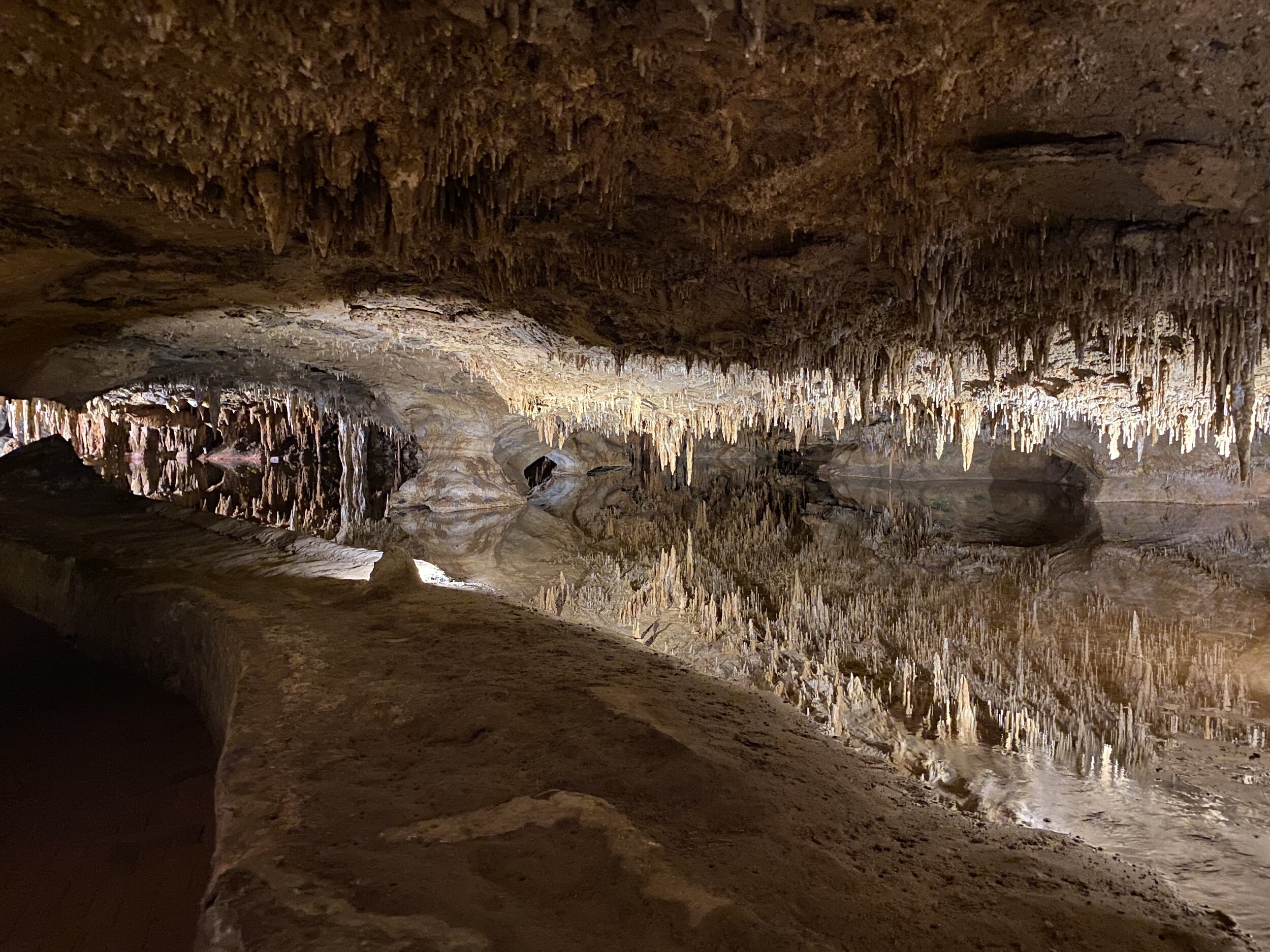Copper Castles Without Kings: Luray Caverns, VA
My feet, planted upon solid ground, would never guess there was a hidden world beneath their sturdy purchase. My comrades and I descend beyond the crust, to where ancient cities born by nature lie, eroded from some unknown ocean long ago. Through man-made doors and into a tunnel lit with small white orbs, we follow the glistening gray path to a copper castle without a king. All is quiet but for the dripping of water, echoing distantly. The hairs on my arm stand up in the damp, cold air, and my breath catches in my throat as I catch sight of the first cavern.
Long shadows spread across the ceiling from the spears that peer down at me. The fingers of God and Adam touch as a stalactite kisses a stalagmite. Drapery of stone melts down in orange sheets like icing, transparently glowing from the lights behind them. Spongy coral-like rocks adorn the ground below me and the ceiling above, giving the impression of being submerged in the depths of an empty ocean. I look up and realize the outside world—present, modern day—is just above my head, oblivious upon the crust.
Like walking through a peaceful cemetery, the twisting hallways are oddly calming, and invite me to lower my voice to a respectful whisper. A rock formation meets in an archway, just taller than myself. I walk through it and feel as though I’ve stepped into the ruins of a great hall once used by dwarves in Middle Earth. Cathedral-high ceilings held up by towering pillars look down on me. How many generations have laid their eyes upon these toothy fangs and knobby growths? Are they stalagmites, or the petrified spines of a dragon’s bones?
The burning bush, frozen in Pompeii. The underside of a mushroom. A massive, wet mustache. How can earth take such bizarre forms? It’s like being in a mirror room, where you’re never sure whether or not to trust your eyes. A pool of water stands so still that I can’t tell up from down, until a ripple spreads magically from a single point to its edges in silent sound waves. I inhale the smell of wet clay and sigh, never wanting to leave. Men have gone mad, down here, they say—but I don’t think I’d mind the silence.
My friends and I lie down on the cavern floor, icy cold moisture licking the back of our necks, and look up at the ceiling as though it were the stars. In an instant, all speech is stolen from our mouths. We stare in awe at the spectacular sight above us, somehow different from when we craned our necks to look up at it a minute before. A staff member presses a button to activate the “Great Stalacpipe Organ,” an instrument that literally plays the cave. A heavenly sound, like the call of an ocean creature, sings us a soft lullaby.
We ask him to play it again four or five times over, before we finally rise and decide it is time to head home. On our way out, we pass a turquoise pool, glistening with coins—donations, for the upkeep of the caves. We toss in quarters together, making a wish, and mine is that I’ll return to Luray Caverns again soon.
101 Cave Hill Rd, Luray, VA 22835
About
Luray Caverns is a cave just west of Luray, Virginia, United States, which has drawn many visitors since its discovery in 1878. The cavern system is generously adorned with speleothems such as columns, mud flows, stalactites, stalagmites, flowstone, and mirrored pools. Wikipedia
The Great Stalacpipe Organ
The Great Stalacpipe Organ is an electrically actuated lithophone located in Luray Caverns, Virginia, USA. It is operated by a custom console that produces the tapping of ancient stalactites of varying sizes with solenoid-actuated rubber mallets in order to produce tones. Wikipedia




